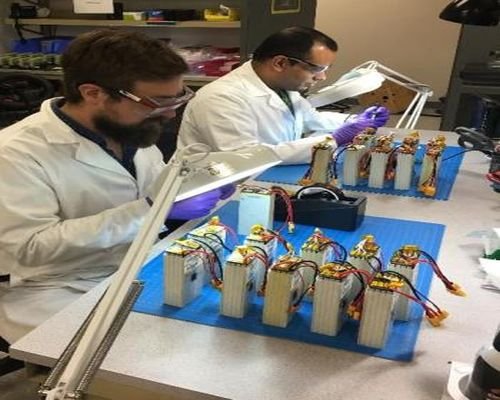Battery breakthrough news tends to be all the same — long on promises, short on actual results. But not this time…
 Pellion Technologies — a battery startup located in Massachusetts, has developed a lithium metal battery that has double the power and half the weight of a conventional lithium ion battery and the company is actually selling its batteries to commercial customers.
Pellion Technologies — a battery startup located in Massachusetts, has developed a lithium metal battery that has double the power and half the weight of a conventional lithium ion battery and the company is actually selling its batteries to commercial customers.
Pellion’s battery doesn’t start with lithium metal inside. Instead, the battery is manufactured in the exact same way as a conventional lithium-ion battery, including using a liquid electrolyte, a widely available cathode, and an anode that begins its life as a copper sheet. That’s crucial because it allows Pellion to use existing lithium-ion battery factories in Asia, where it’s much cheaper to manufacture batteries.
“In its discharged state, the Pellion battery has its lithium ions sitting snugly inside the cathode. The magic happens when the battery is charged for the first time and the lithium ions travel from the cathode and deposit as a layer of lithium metal on the copper anode. The first charge is carried out in a state when the battery is completely sealed from the outside environment, and thus the newly formed layer of lithium metal is protected.
This configuration is called “zero-lithium” or “lithium-free.”
The battery cells Tesla uses have an energy density of 600 watt-hours per liter and 200 watt-hours per kilogram. The figures for the Pellion lithium metal battery are nearly double — 1,000 watt-hours per liter and 400 watt-hours per kilogram. Which means if Pellion overcomes early limitations, its batteries could power a Tesla car for 800 km (500 miles) on a single charge, rather than today’s upper limits of 400 km.
Pellion’s battery does have limitations. It typically takes three hours to charge the battery fully, and it’s not cheap plus has a limited number of life cycles: it can only guarantee 50 charge-discharge life cycles.
That’s much lower than the approximately 300 life cycles needed for a battery to go in a smartphone or the 1,000 life cycles required for electric cars. So for now, Pellion’s claims need to be taken with a grain of salt.
Reference- Pellion website, Cleantechnica, Quartz





